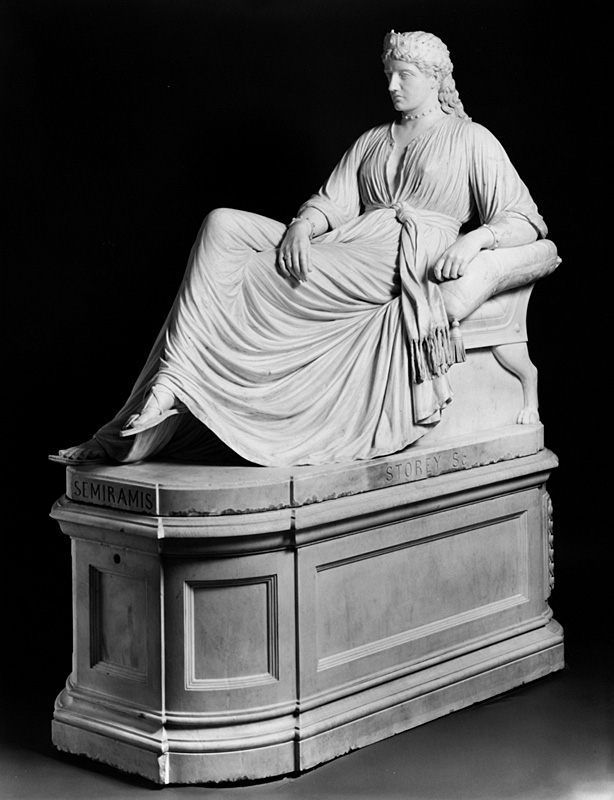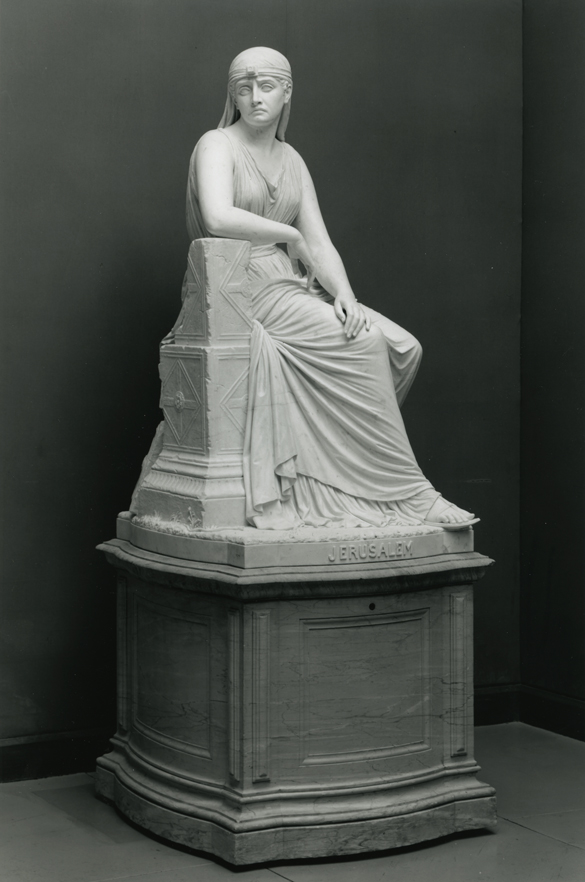
Semiramis
William Wetmore Story
In 1855 William Westmore Story abandoned his legal practice and his position as a prominent member of Boston society to join the community of expatriate artists in Rome. He had modeled in clay as an amateur from his late teens, but had little formal training. Once established in Rome and with his studio the center of American society there, Story found few patrons for his work until Pope Pius IX saw two of his statues and paid for them to be shown in London in 1862. Independently wealthy, Story was not compelled to turn out portrait busts for a living. He preferred to depict idealized characters drawn from history, mythology, or literature - often women who lived lives filled with emotional or psychological turmoil. Story's subjects exhibit a brooding melancholy and carry props suggestive of their situation. The mythological identity of Semiramis, a queen of Assyria about 800 B.C., had been the subject of an opera by Rossini, a performance of which was certainly witnessed by Story in Rome. A queen who killed her husband and is later killed by the son she abandoned, she sits staring as if contemplating the evil she has done. Two marble replicas of the clay model were made. This example is unusual in that it still sits on its original pedestal.
Artist
Date of Birth
(1817-1895)
Date
1873
Medium
Marble
Dimensions
54 1/2 x 34 1/2 x 65 1/2 in. (138.43 x 87.63 x 166.37 cm.)
Accession #
1982.12
Credit Line
Gift of Mr. and Mrs. Jacob M. Kaplan
Copyright
No known copyright restrictions
Category
Subject
More by William Wetmore Story
We're so excited you're planning to visit PAFA!
Make time for art — visit us Thursday to Sunday.
Before reserving your tickets, please review helpful information about museum hours, accessibility, building access, and special admission programs.
If you have any questions, feel free to reach out to us at visitorservices@pafa.org — we’d love to help!
